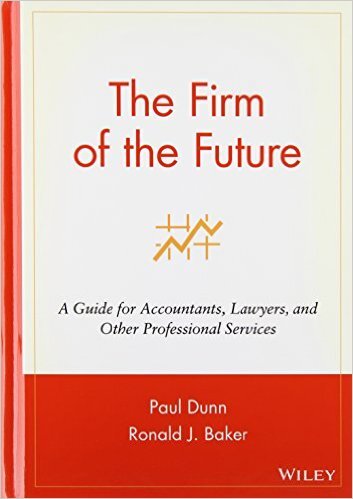On Airquotes Firm of the Future Thinking
 Yesterday, a former colleage of mine sent me this piece by Jim McGinnis of Intuit. In the interest of full disclosure, and as many of you already know, I work for a competitor of Intuit’s, Sage. Please note this is not about me slamming a competitor from a product standpoint, but rather I am calling out errors in Mr. McGinnis’ thinking. I have never met him and I am sure he is an affable fellow.This is not an attack on him, but the ideas presented (or lack thereof) in the post.Mr. McGinnis proposes a three step process to becoming a "Firm of the Future.”
Yesterday, a former colleage of mine sent me this piece by Jim McGinnis of Intuit. In the interest of full disclosure, and as many of you already know, I work for a competitor of Intuit’s, Sage. Please note this is not about me slamming a competitor from a product standpoint, but rather I am calling out errors in Mr. McGinnis’ thinking. I have never met him and I am sure he is an affable fellow.This is not an attack on him, but the ideas presented (or lack thereof) in the post.Mr. McGinnis proposes a three step process to becoming a "Firm of the Future.”
- Get on the cloud.
- Become a trusted advisor.
- Get connected.
Needless to say, I find this listicle a bit, err, lacking.For example, the first sentence of the first paragraph of his first step is:
In the cloud, you can meet client expectations, stay relevant through improved efficiency, achieve greater collaboration, realize more time savings and lower your costs.
Oh where to begin.Let me offer a listicle of my own as a critique. I shall entitle it Five Ways This Sentence Completely Misses What Being a Firm of the Future Really Is About. (I know, my headlines suck.)
- “In the cloud” - The “cloud” is just a technology. It is not a change in a business model which is what moving to The Firm of the Future really is. It is a change to how the organization creates value for and captures value from its customers. Admonishing folks to “get on the cloud” is a akin to saying “use pencils instead of quill pens” or “use Excel instead of an adding machine.” Yes, it is important to do, but it is not a business model innovation.
- “Client expectations” - As advocates for The Firm of the Future, both Ron Baker and I suggest using the word “customer” not “client.” Why? Well I wrote whole blog post on that one.
- "Improved efficiency” - Customers do not care about the efficiency of a firm, they care about the firms effectiveness. Ask yourself this, if you have a brain tumor, do you want an efficient surgeon or an effective one? Clearly the latter. At VeraSage there is an entire blog category dedicated to the topic of efficiency versus effectiveness. We call it the “Eff’ing Debate.” I believe that great business strategy is the art of staying one step ahead of having to worry about being efficient.
- “Time saving” - Time cannot be "saved.” Time is a constraint to which all of us who live in this time/space continuum are subject; it is not a resource. Our time is not “worth” anything. There is not a single customer of a professional firm who wanted to buy an hour of time; they wanted the results of the hour. Peter Drucker said, “Sell what your customers buy.” DUH! Yet, professionals keep putting “hours" on invoices. Nobody wants hours. In addition, when one is billing by the hour what exactly does “time saving” do? It reduces your price. The more efficient you are the less money you make. What a terrible model! Some argue your rate will go up. Perhaps, but the reduced time it takes is sometimes a factor of ten or more. Nobody’s “billing rate” increases by a factor of ten, perhaps even over the entirety of their career. The author even acknowledges this later in the post.
- “Lower your costs” - Beside the above mentioned “and your price” if you bill by the hour, this is simply not true. Costs do not change much in any professional firm since they are overwhelmingly fixed. Cost allocation might change, but again, customers do not care how you allocate your costs. Have you ever walked into a Starbucks and thought, “Gee, I hope these guys have their costs allocated correctly.” I doubt it.
And that is just the first sentence of the first step. Other errors:
- Using “Trusted Advisor” I do a session on why professional should not use this term in the marketing. Short form of the argument – Saying “I want to be your trusted advisor” to a prospect is like asking “How many kids do you want to have?” on a first date. Quite a bit forward don’t you think. Oh, and another blog post.
- Use of the phase “flat-fee pricing.”
- Use of the phrase “value billing.” Again, a post on this subject from 2009.
- The the choices of “low medium and high” are not meant to be target at “small medium and large clients.” There’s that word again.
I got more, it is an entire two day class.
